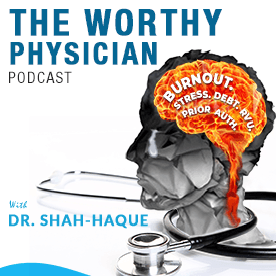Revisiting the Physiology of Burnout
Burnout is a state of physical, mental, and emotional exhaustion caused by prolonged or excessive stress. It can affect anyone, but is most commonly experienced by those in high-stress occupations, such as those in the healthcare or finance fields. A variety of physiological changes can occur in the body when burnout sets in.
The most obvious change is fatigue. Long-term stress has been linked to a decrease in the production of Cortisol, the hormone responsible for giving us energy. Without it, we feel exhausted and unable to concentrate. Additionally, chronic stress has been linked to an increase in sympathetic nervous system activity. This is the fight-or-flight response, responsible for our reaction to danger. When this is on for too long, it has the opposite effect, making us feel sluggish and unable to cope with everyday tasks.
In the long term, severe burnout can lead to more serious physical illnesses, such as heart disease, diabetes, and depression. Stress can even suppresses the immune system, leaving us more susceptible to colds and other illnesses.
Burnout is a state of physical, emotional, and mental exhaustion brought on by prolonged or excessive stress. It differs from regular stress that you may experience from time to time and can have serious physical, emotional and mental consequences if not addressed. In this blog post, we’ll look at the physiology of burnout and how it affects the body.
At its core, burnout is caused by prolonged exposure to physical, emotional, or psychological stress. It can be brought on by a variety of situations, such as long-term exposure to workplace stress, personal conflict, or even just the pressures of daily life.
When we’re exposed to stress, our body automatically releases hormones called cortisol and adrenaline. While these hormones are helpful in the short term, they can deplete our resources, leading to physical and emotional exhaustion over time.
When cortisol and adrenaline levels remain elevated for too long, our body becomes depleted of important hormones and neurotransmitters like serotonin and dopamine, which are responsible for regulating our mood, energy, concentration, and focus. When this happens, we can start to feel physical and emotional symptoms, such as fatigue, insomnia, short temper, irritability, and even depression.
Burnout can also affect our immune system, leaving us prone to more frequent colds and flus, as well as more serious illnesses. In fact, long-term stress can lead to chronic inflammation, which can increase your risk of heart disease, diabetes, and depression.
It’s important to note that burnout is not a one-size-fits-all condition. Everyone experiences it differently, and some people are more prone to burnout than others. If you’re feeling the signs of burnout, it’s important to seek help from a professional so you can develop strategies to manage your stress and begin to create a more balanced work-life.
Burnout is a state of physical, mental and emotional exhaustion that often occurs as a result of prolonged stress. It can interfere with your ability to perform physical activities, as well as impact your social and mental wellbeing. Fortunately, understanding the physiology of burnout is the first step in managing your stress and leading a healthier life.
The most common symptoms of burnout include tiredness, irritability, difficulty sleeping, difficulty concentrating, and a lack of motivation. It is believed that burnout is the result of a combination of excessive workload, lack of job control and low reward for performance, often compounded by shortages of resources, high pressure, challenging deadlines, and more. All of these can lead to physical, mental and emotional exhaustion.
At a physiological level, burnout is characterized by increased levels of cortisol and adrenaline. Cortisol is a stress hormone that is released when an individual experiences increased levels of stress. As cortisol levels rise, they can increase blood pressure, heart rate and glucose levels, as well as decrease serotonin production. Decreased levels of serotonin, which is an important neurotransmitter, can lead to feelings of sadness and/or apathy.
Adrenaline is a hormone released when we experience ‘fight or flight’ reactions, such as feeling threatened or stressed. Elevated levels of adrenaline can lead to increased heart rates, rapid breathing and increased muscular tension, as well as fatigue and concentration problems.
Unfortunately, the physiological effects of burnout can take a long-term toll on a person’s health. Long-term factors such as depressed immune system, increased risk of cardiovascular disease, and metabolic syndrome, as well as a decreased life expectancy, are all potential side effects of chronic burnout.
Fortunately, there are steps you can take to reduce your risk of burnout and its physical effects. The key lies in balancing stress levels with effective coping methods, such as regular exercise and healthy eating, getting enough sleep and relaxation, and seeking out social support. Additionally, you should make sure to take time off from the workplace, prioritize tasks, and manage your time wisely. Ultimately, understanding the physiological impact of burnout is the first step in developing strategies to manage your stress and create a more balanced work-life.


